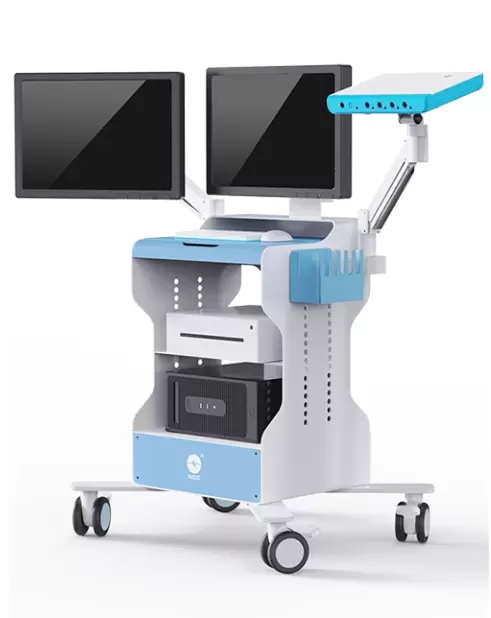Electromyography (EMG) is a powerful diagnostic tool used to evaluate and record the electrical activity produced by skeletal muscles. This technique is essential in both clinical and research settings, providing valuable insights into muscle function and nerve health. In this article, we will explore the fundamentals of EMG machines, their applications, and how the NCC EMG/EP System stands out in this field.

What is Electromyography?
Electromyography measures the electrical signals generated by muscle cells when they are activated by nerve impulses. These signals, known as motor unit action potentials (MUAPs), can be recorded using an electromyograph, which produces a visual representation called an electromyogram. The EMG process typically involves placing electrodes on the skin or inserting them into the muscle to capture these electrical signals.
Key Functions of EMG
1. Diagnosis of Neuromuscular Disorders: EMG is commonly used to diagnose conditions such as muscular dystrophy, neuropathies, and myopathies by assessing the electrical activity of muscles.
2. Nerve Conduction Studies (NCS): Often performed alongside EMG, NCS measures the speed and strength of signals traveling in the nerves, helping identify nerve damage.
3. Research Applications: EMG is utilized in various research fields, including biomechanics and rehabilitation science, to study muscle function during different activities.
How Does an EMG Machine Work?
An EMG machine consists of several key components:
- Electrodes: These can be surface electrodes placed on the skin or needle electrodes inserted into the muscle. The choice depends on the level of detail required.
- Amplifiers: These enhance the weak electrical signals from the muscles to make them readable.
- Display System: The processed signals are displayed on a monitor for analysis.
- Recording Medium: Data can be stored for further evaluation and comparison.
The NCC EMG/EP System exemplifies advanced technology in this field, delivering high-quality EMG signals through its innovative hardware and software design.
Why Choose NCC EMG/EP System?
The NCC EMG/EP System is designed for both medical diagnostics and research purposes, offering features that enhance its usability and effectiveness:
- Multi-Channel Capability: Available in configurations of 2, 4, or 8 channels, it can perform EMG, Nerve Conduction Velocity (NCV), and Evoked Potential (EP) functions simultaneously.
- Compact Design: The integration of amplifiers and current stimulation within a lightweight unit allows for easy portability without compromising functionality.
- Superior Anti-Interference Technology: With a robust DC power supply, it minimizes AC power interference, ensuring accurate readings even in challenging environments.
- Modular Flexibility: The system's modular design allows for various configurations tailored to specific examination needs, making it easy to operate and upgrade.
- Portable Solutions: Coupled with a laptop computer, this system enables clinicians to conduct tests anytime and anywhere, enhancing patient care accessibility.
Conclusion
Understanding electromyography is crucial for healthcare professionals involved in diagnosing neuromuscular disorders or conducting research in muscle physiology. The NCC EMG/EP System exemplifies state-of-the-art technology that enhances both clinical diagnostics and research capabilities. With its advanced features and portability, it stands out as a reliable choice for practitioners looking to improve patient outcomes through accurate electromyographic assessments. Whether you are a clinician or a researcher, investing in quality EMG equipment like the NCC system can significantly enhance your diagnostic capabilities and contribute to better patient care.


